Growth is exhilarating—fresh customers, new revenue streams, additional employees, and bigger goals. But expansion also multiplies risk. Every new laptop, SaaS subscription, or remote office introduces another doorway threat actors can jostle. Hiring two dozen people in a single quarter can overwhelm your HR onboarding checklist, let alone the information-security guardrails that kept things tidy when the whole team fit around a lunch table in the Warehouse District.
Documented IT policies are the seatbelts and traffic lights of a fast-moving organization: invisible when everything flows smoothly, life-saving when a hurricane—or a ransomware wave—hits the Gulf Coast. Below are ten foundational policies New Orleans–area companies should record, communicate, and revisit regularly. While each might appear obvious, the discipline of writing them down, securing executive signatures, and embedding them into daily operations is what turns “common sense” into enforceable practice that auditors, insurers, and regulators respect.
Acceptable Use Policy
The acceptable use policy (AUP) sets the tone for every interaction employees have with corporate technology. It spells out what “work resources” actually mean—desktops, cloud drives, Wi-Fi networks, conference-room displays—and clarifies permissible versus prohibited actions. Without a clear AUP, leadership has little leverage when someone installs cryptocurrency-mining software on a development server or streams live sports in 4K during work hours, slowing the entire office’s internet.
A Louisiana-flavored AUP should touch on regional realities, such as using company hotspots during hurricane evacuations or complying with state data-breach statutes when staff connect from temporary locations. Make it plain that the company may monitor traffic for security and performance, that copyrighted material cannot be downloaded without licensing, and that sensitive internal information stays off personal cloud accounts. Requiring employees to acknowledge the AUP during onboarding—and again after significant revisions—creates audit trails and reinforces that “I didn’t know” is not a defense.
Information Security Policy
While the AUP governs behavior, the information security policy establishes the overarching philosophy: protecting confidentiality, integrity, and availability of data. It assigns roles and responsibilities, from executive sponsorship to the security officer who maintains logs. The document outlines risk-assessment cycles, defines the security posture for each data classification, and references supporting procedures such as vulnerability scanning or patch management.
For Gulf Coast businesses, the policy should integrate natural-disaster contingencies: specify how backups are replicated out of region, require secondary internet providers at mission-critical sites, and identify chain-of-command contacts if headquarters loses power. Insurers now ask for written proof that leadership understands cyber risk. A concise, board-approved information security policy answers that question before premiums spike.
Identity and Access Management Policy
Identity is the new perimeter. Phishing kits grow more convincing by the month, and reused credentials from the latest data-breach pastebin can unlock shared admin accounts if you lack formal controls. An identity and access management (IAM) policy dictates how users prove who they are, how privileges are granted, and how dormant accounts die.
Key elements include mandatory multi-factor authentication for cloud and VPN services, password-rotation standards (or passwordless alternatives), and forbidden practices like shared logins for point-of-sale terminals. The policy should spell out least-privilege review intervals and segregation of duties: no developer pushes code directly to production without a second set of eyes, and no finance clerk maintains their own invoice approval rights forever.
For growing organizations, automated provisioning and de-provisioning workflows are critical. When HR updates a termination date, access should evaporate within minutes. The policy can require integrating identity platforms—Azure AD, Okta, JumpCloud—with the HRIS to prevent human lag that ex-employees exploit.
Data Classification and Handling Policy
Not every file is equal. Customer PII demands encryption and strict sharing barriers; marketing banners destined for the public website do not. A data-classification policy labels information—public, internal, confidential, regulated—and maps each tier to storage, transmission, and disposal rules.
Small firms often assume classification is overkill until a departing salesperson copies the entire CRM to a USB stick. With a written policy, you can configure DLP tools to scan for “confidential” tags and block exports automatically. The policy should describe acceptable encryption methods, outline secure-sharing channels, and define retention schedules aligned with legal requirements—seven years for certain financial documents, indefinitely for intellectual property, thirty days for CCTV footage unless an incident warrants longer storage.
Because many Louisiana companies collaborate with oil-and-gas majors or government agencies, the policy allows easier alignment with frameworks like CMMC or CJIS when contracts require attestations.
Backup and Recovery Policy
If you cannot restore it, it never existed. The backup and recovery policy documents what data, systems, and configurations are protected, how frequently, where replicas reside, and who owns the recovery checklist. It also states the organization’s recovery time objective (RTO) and recovery point objective (RPO) so business units know what to expect.
In hurricane territory, this policy must include off-site replication at least 150 miles inland or in a separate cloud region, plus procedures for initiating restores if the main office is inaccessible. It should address immutable backup technologies that thwart ransomware attempts to encrypt archives. Testing frequency is critical: a quarterly table-top and an annual live restore prove that backups actually work.
Incident Response Policy
No growing company is immune to security incidents. An incident response (IR) policy transforms panic into process by defining what qualifies as an incident, who forms the response team, and which communication channels to use. It establishes severity levels—malware detection on one workstation versus confirmed data exfiltration—and triggers for escalating to legal counsel, insurers, or law enforcement.
A solid IR policy includes call trees, evidence-preservation steps, and media-statement templates. For New Orleans firms, it should cover scenarios where primary contact numbers fail due to telecom outages, listing secondary methods such as satellite phones or encrypted messaging apps. Regulatory notification timelines—Louisiana’s data-breach law requires notice within sixty days—must be baked in, with responsible parties and countdown timers.
Change Management Policy
When startups double their headcount, ad-hoc configuration tweaks can pile up faster than beignets disappear at morning stand-ups. A change management policy ensures that modifications to production systems follow a documented pathway: request, impact analysis, approval, scheduling, implementation, and validation.
The policy delineates what constitutes “standard” changes—routine patching, user additions—and “significant” changes that need committee review. It mandates rollback plans and post-implementation reviews to capture lessons learned. Tooling like ITIL-aligned ticketing systems or version-controlled infrastructure-as-code repositories makes compliance scalable.
Including emergency-change provisions is crucial. When a zero-day exploit threatens your firewalls, you need authority to bypass normal cycles but still document the after-action details. Such clarity prevents finger-pointing when a late-night fix accidentally drops the corporate VPN.
Remote Work and BYOD Policy
The pandemic accelerated a work-from-anywhere culture, and South Louisiana’s hurricane evacuations remind us that “remote-first” is a resilience play, not just a perk. A remote work and BYOD policy balances flexibility with security.
It specifies which roles may use personal devices, the minimum OS version and patch level allowed, and required endpoint-protection agents. It also defines secure network access methods—Zero Trust Network Access over legacy VPN when possible—and clarifies the boundary between corporate data and personal files. Employees must understand that IT may remotely wipe a stolen phone if company email syncs there.
Expense handling deserves attention too. Will the company reimburse home-office internet upgrades? Does the stipend cover a surge-protected power strip to guard against Gulf Coast thunderstorms? Documenting these questions averts mismatched expectations when new hires onboard rapidly.
Vendor and Third-Party Risk Management Policy
Modern businesses are ecosystems. Your SaaS CRM, payroll processor, marketing-email platform, and offshore development team all funnel data in and out of your domain. A vendor-risk policy formalizes how you vet partners, contractually require security controls, and monitor ongoing compliance.
Key steps include security questionnaires aligned with standards like SOC 2 or ISO 27001, review of penetration-test summaries, and contractual language about breach notification. The policy also defines risk tiers: strategic partners handling regulated information face deeper scrutiny than a flower-delivery service sending holiday arrangements.
The SolarWinds breach and downstream Log4Shell exposures proved that third-party risk is existential. Documenting the process shields your company in board meetings and insurance renewals by demonstrating proactive diligence.
Business Continuity Plan Policy
While backup policies get data back, a business continuity plan (BCP) keeps operations running during disruptions—power failures, supply-chain interruptions, cyberattacks, or a week-long boil-water advisory. The BCP policy describes how often the plan is updated, who leads crisis coordination, and what alternate workspaces or cloud failovers exist.
For New Orleans organizations, satellite offices in Baton Rouge or Dallas, generator fuel contracts, and explicit trigger points for “lift and shift” migrations are paramount. Running an annual simulation—team members grab laptops and operate from a co-working space across town—uncovers hidden pitfalls like forgotten VPN tokens or vendor portals that whitelist the office IP only.
Weaving Policies into Culture
A thick binder of policies collecting dust helps nobody. Once documented, each policy must translate into training, technical controls, and executive accountability. Here are actionable tactics:
- Map every policy to at least one measurable control in your monitoring dashboards. If the IAM policy mandates MFA, track weekly compliance percentages.
- Conduct quarterly lunch-and-learn sessions where employees discuss real-world scenarios that test policy boundaries—should marketing use personal Canva accounts? May a field engineer hotspot a friend’s phone to upload client blueprints?
- Integrate policy acknowledgment into single sign-on portals so staff re-certify annually with a click.
- Celebrate compliance wins: when an off-boarding automation revokes thirty accounts instantly, publicize the audit score improvement on Slack.
- Use policy language in performance reviews for leaders. A director who ignores stale-account alerts risks their bonus—nothing motivates like metrics tied to compensation.
Keeping Policies Alive Through Growth
Policies drafted when your company had twenty employees will not survive intact when payroll tops two hundred. Create a policy life-cycle workflow:
- Assign an owner for each policy—never a committee. An accountable individual drives edits and approval loops.
- Review annually or after major events like acquisitions or regulatory changes.
- Track version numbers and change logs so employees know what’s new.
- Store policies in an accessible, version-controlled repository with role-based permissions: employees read; owners edit; auditors comment.
When introducing revised policies, mark changes visually—yellow highlights or comparison modes—so busy staff grasp updates quickly. Offer short explainer videos for complex areas like classification or incident response.
Tailoring Policies to Louisiana’s Legal Landscape
Beyond federal standards such as HIPAA or PCI-DSS, Louisiana statute R.S. 51:3071 et seq. governs data-breach notification, while the Public Bid Law influences IT procurement for entities touching state funds. Policies should reference applicable statutes and embed timelines—for instance, the sixty-day breach notice requirement—so legal counsel isn’t consulted under duress.
Industry-specific regulations matter too: maritime companies handling International Ship and Port Facility Security (ISPS) data, healthcare operators under the Louisiana Department of Health, or casino/hospitality groups facing stringent gaming-commission oversight. A generic template downloaded from the internet may miss these nuances. Engaging a local managed IT provider with compliance expertise ensures your documents speak both cybersecurity and Cajun legal dialects.
The Return on Documented Policies
Investing time in policy creation pays dividends beyond risk reduction:
- Lower cyber-insurance premiums: carriers increasingly demand written proof of controls.
- Faster audits: SOC 2, ISO, or PCI assessments hinge on existing documentation.
- Smoother mergers: acquirers value companies that can demonstrate governance.
- Resilient culture: new hires absorb expectations on day one, minimizing friction.
- Elevated brand trust: customers sleep better knowing their data sits behind formal guardrails.
Common Pitfalls and How to Avoid Them
- Over-complexity: A twenty-page AUP filled with legal jargon scares users into ignoring it. Keep language plain; link deep technical details in an appendix.
- Shelfware: Draft policies during a compliance sprint, then forget them. Schedule recurring calendar reminders for review.
- One-size-fits-all: Copying a Fortune 500 policy verbatim overloads a fifty-person startup. Scale controls to risk level; leave room for maturation.
- Shadow IT loopholes: If policies ignore the marketing team’s favorite design SaaS, staff will skirt rules. Perform periodic SaaS discovery scans to align documentation with reality.
- Lack of executive buy-in: Policies without C-suite signatures carry no weight. Present risk scenarios and ROI to secure endorsement at the highest level.
Taking the First Step
Start simple. Convene a cross-functional taskforce with IT, HR, finance, and legal. Identify which of the ten policies above already exist, even in rough draft, and which remain blank pages. Prioritize those linked to the biggest risk gaps—usually identity, backups, and incident response. Use free frameworks like the Center for Internet Security or the NIST Cybersecurity Framework as scaffolding.
Draft, review, approve, publish, train, measure, repeat. Policies are living organisms that evolve alongside your company. Done well, they empower rather than restrict, guiding innovation on the Mississippi Riverfront while deflecting cybercriminals and compliance headaches alike.
Your managed services partner can accelerate the journey, supplying templates honed across dozens of Gulf Coast clients, automating technical enforcement, and serving as virtual CISO during board presentations. In a region where tropical storms gather faster than calendar meetings, that partnership—underpinned by robust, documented policies—keeps systems online, customers happy, and growth sustainable.


